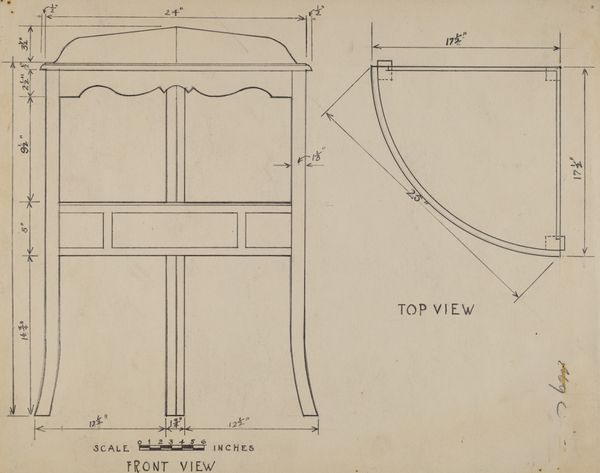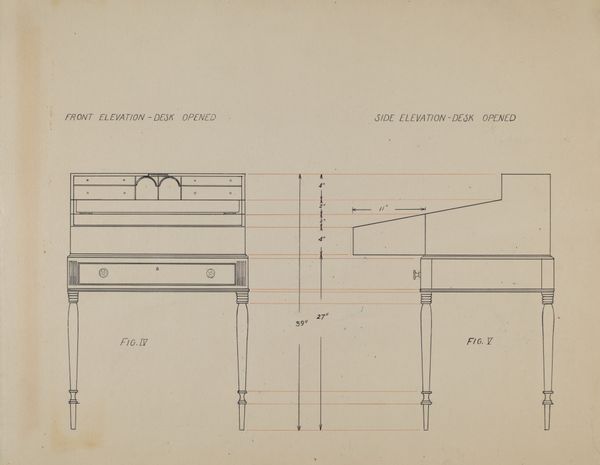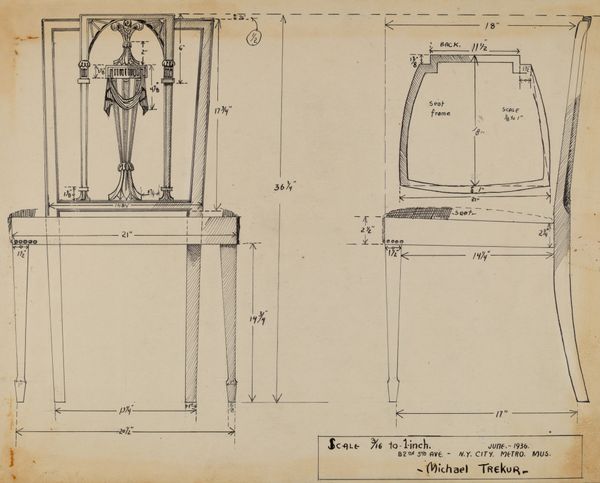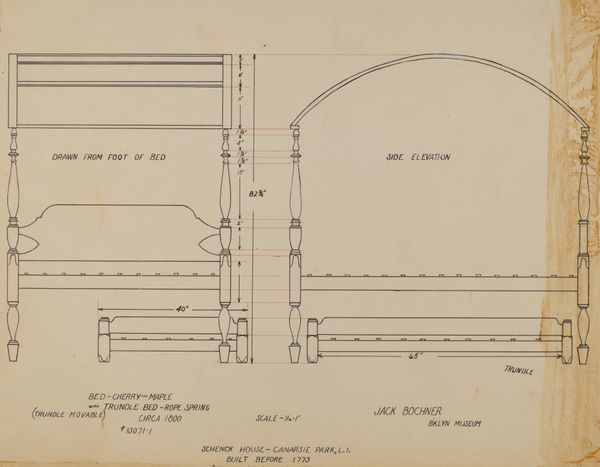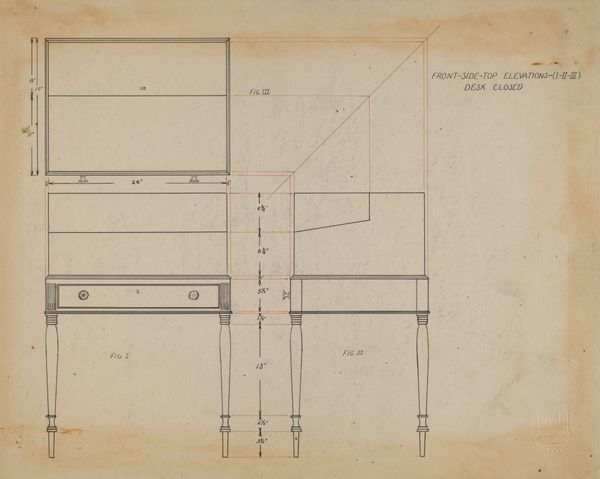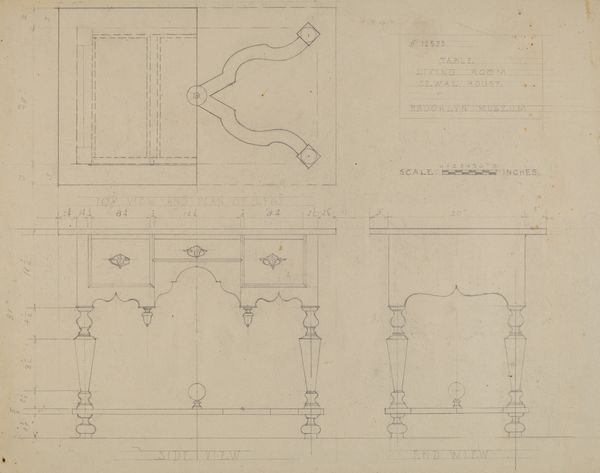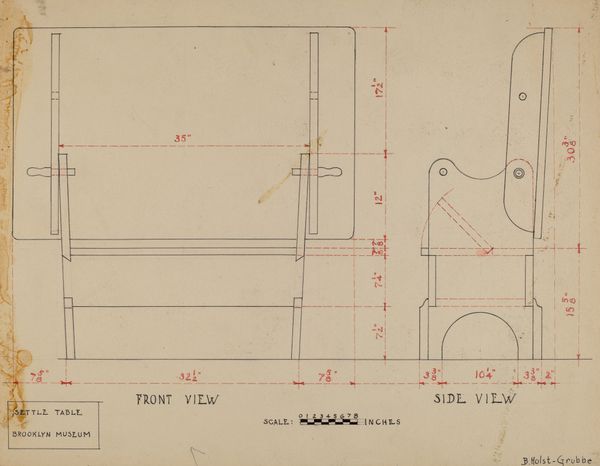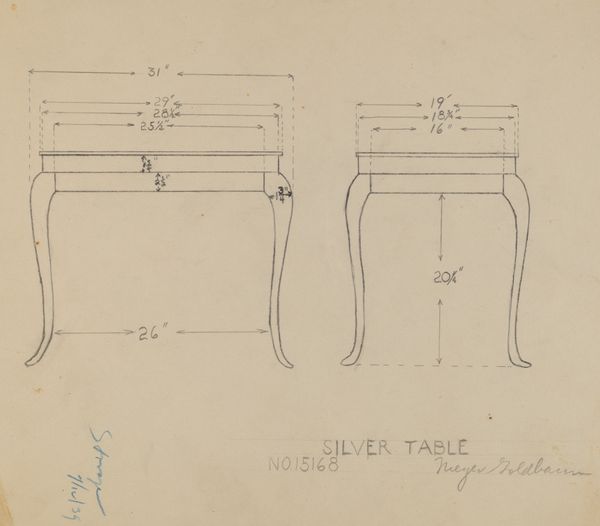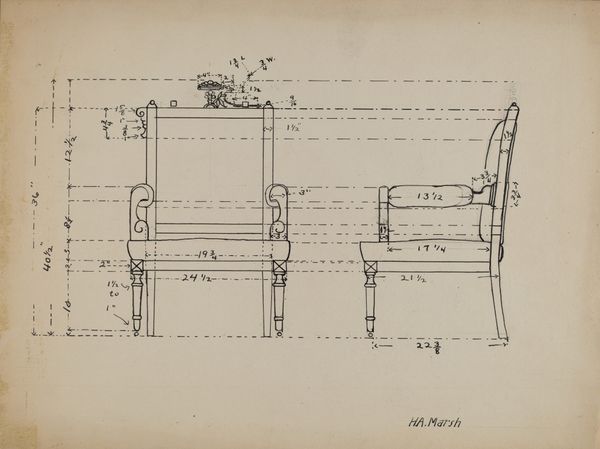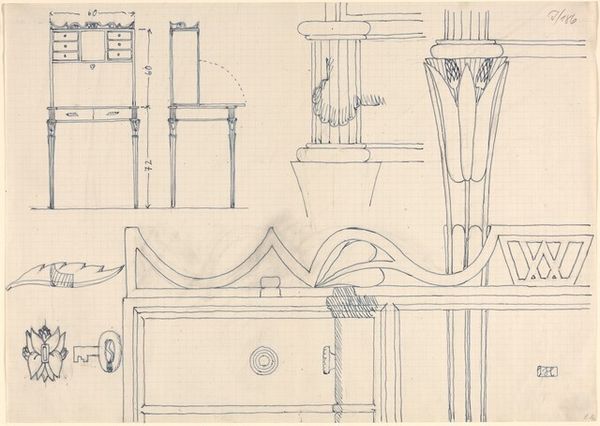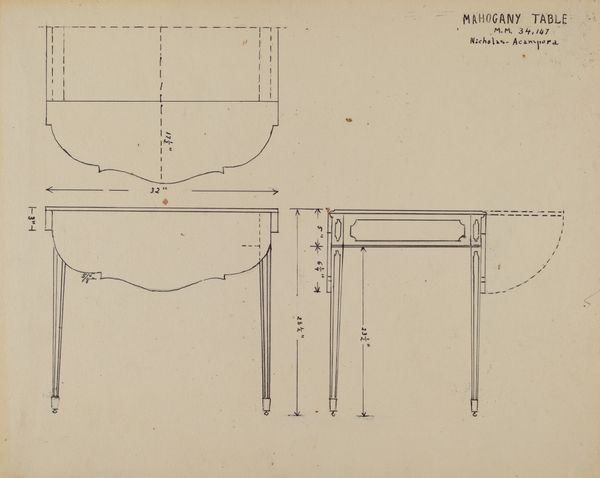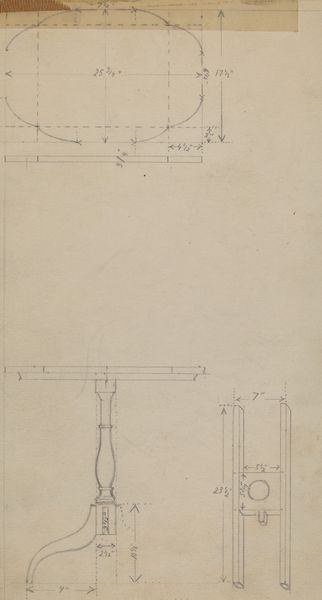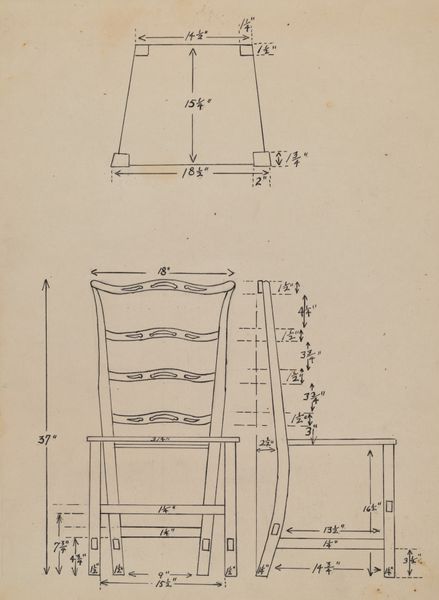
drawing, paper, pencil
#
drawing
#
paper
#
geometric
#
pencil
Copyright: National Gallery of Art: CC0 1.0
Curator: We're looking at a drawing simply titled "Doll Bed" dating from somewhere between 1935 and 1942. It's rendered in pencil on paper. What are your immediate impressions? Editor: It feels…precise. Very technical. The stark lines and measured dimensions lack the softness I might associate with something made for a child, especially during a time when comfort and safety were often foregrounded. Curator: Right, let's unpack that. The materiality and method here speak to a different understanding. Pencil, paper, these aren't inherently precious materials. This isn’t some grand oil painting meant for a salon. It suggests a focus on functionality, on the craft of construction itself. We see the elevations laid out meticulously – the top, the front, and side. It’s all about process. Editor: I agree. There's something almost cold about that functional approach. It also brings to mind issues around gender roles and expectations of that time. The "Doll Bed" itself, seemingly harmless, represents a highly gendered space in which young children are indoctrinated into expectations of caregiving. A critical view might suggest this design flattens that complex space. Curator: Interesting perspective. Viewing it from a material perspective, I also think about accessibility. This technical drawing could be a pattern shared among makers—perhaps circulated during the Depression when resourcefulness and practicality were essential. Imagine someone using salvaged wood and these plans to build a toy, or for their small home based furniture business, side stepping traditional channels of manufacturing. Editor: True. Yet even with a populist appeal to resourceful design, one can't ignore the implicit assumptions regarding what types of work, especially domestic craftsmanship, might be seen to be worth rendering in such a structured, schematic way. Are other forms of labor and design marginalized by a perceived lack of “artistic merit”? Curator: It does raise interesting questions about labor and value, doesn't it? It encourages us to look at the object through multiple lenses, considering how art and design intersect with social and economic realities. Editor: Indeed. This "Doll Bed" sketch reminds us that even seemingly simple objects carry complex histories within their design, production, and reception, ones steeped in societal structures. Curator: Absolutely, It is precisely within those seemingly unremarkable materials and designs that deeper connections to their context emerge.
Comments
No comments
Be the first to comment and join the conversation on the ultimate creative platform.
